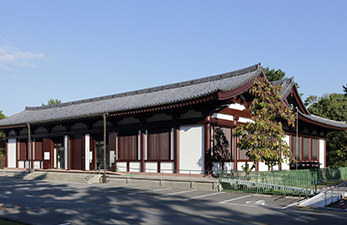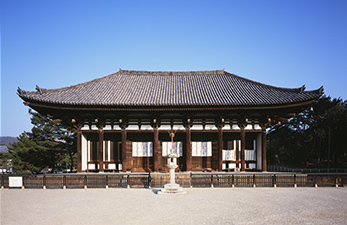With a history of more than 1,300 years, Kohfukuji is one of Japan’s oldest and most famous Buddhist temples.
Its story begins in 669, when Kagami no Ōkimi (d. 683) founded a Buddhist chapel, Yamashinadera, in modern-day Kyoto Prefecture to pray for the recovery of her husband Fujiwara no Kamatari (614–669) from illness. In the wake of the Jinshin Rebellion of 672, the temple was moved to Umayasaka in Nara Prefecture (where it was renamed Umayasakadera), and then relocated to its present site at the time of the establishment of the Heijō Capital (now the city of Nara) in 710. Under the patronage of Kamatari’s son, the great statesman Fujiwara no Fuhito (659–720), the temple was renamed Kohfukuji, “the Temple that Generates Blessings,” in reference to a Buddhist scripture called the Vimalakīrti Sutra.
In the first half of the eight century, Kohfukuji emerged as a leading center of the Hossō (Ch. Faxiang) School of Buddhism. This philosophical tradition, which famously holds that all phenomena are projections created by the mind that appears to experience them, was brought to East Asia by Chinese monks in the seventh century, and introduced to Kohfukuji by the monk Genbō (d. 746) in the year 735.
During the Nara (710–794) and Heian (794-1180) periods the temple expanded rapidly under the patronage of the court and the powerful Fujiwara clan, and gradually merged with nearby Kasuga Shrine, the ancestral Shinto shrine of the Fujiwara family. As the dominant political force in the region, Kohfukuji was granted a shogunal mandate to oversee Yamato Province (modern-day Nara Prefecture) during the Kamakura (1185–1333) and Muromachi (1336–1573) periods.
In the 15th century, Kohfukuji entered a period of political and economic decline that culminated in a catastrophic fire which destroyed most of the temple complex in 1717. During the early Meiji Period (1868–1912), Kohfukuji was targeted by the anti-Buddhist policies of the central government, forcibly separated from Kasuga Shrine, and ultimately abandoned by its monks. It was eventually granted permission to reestablish itself as a religious institution, and continues today as a head temple of the Hossō Sect of Buddhism.




